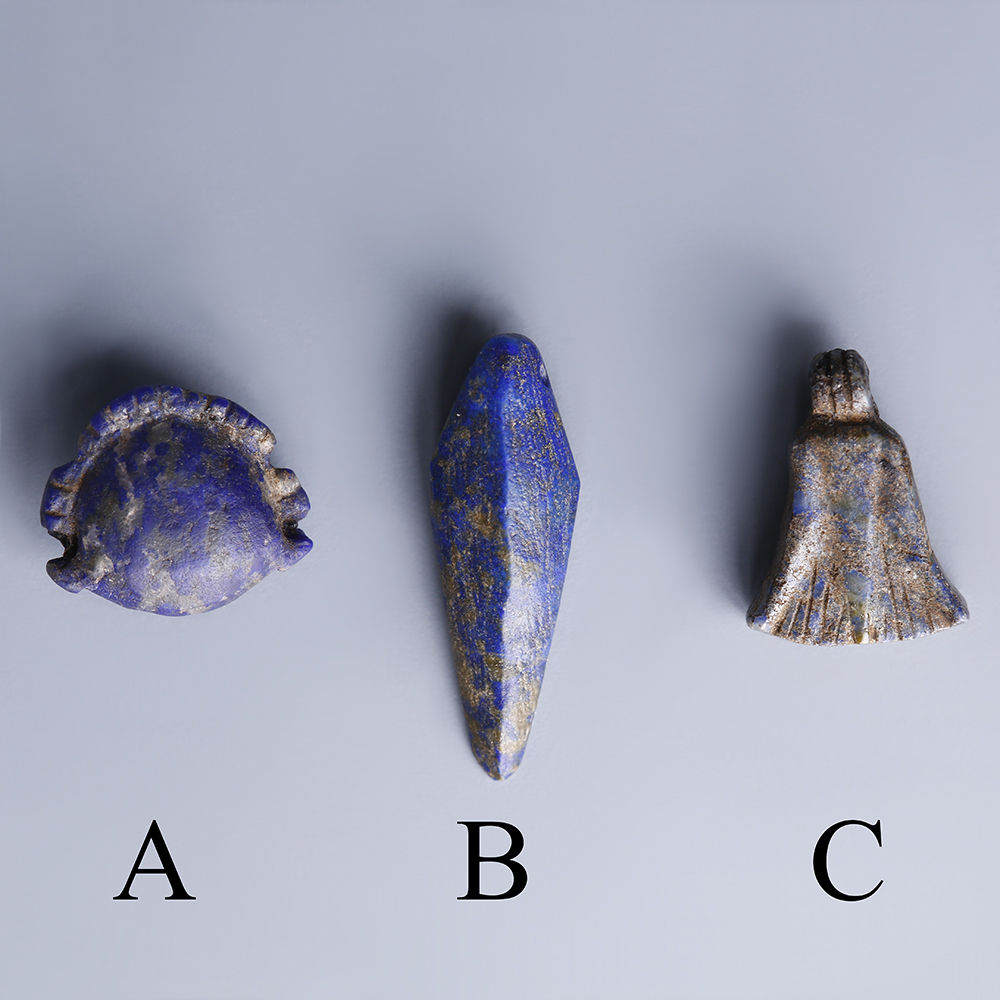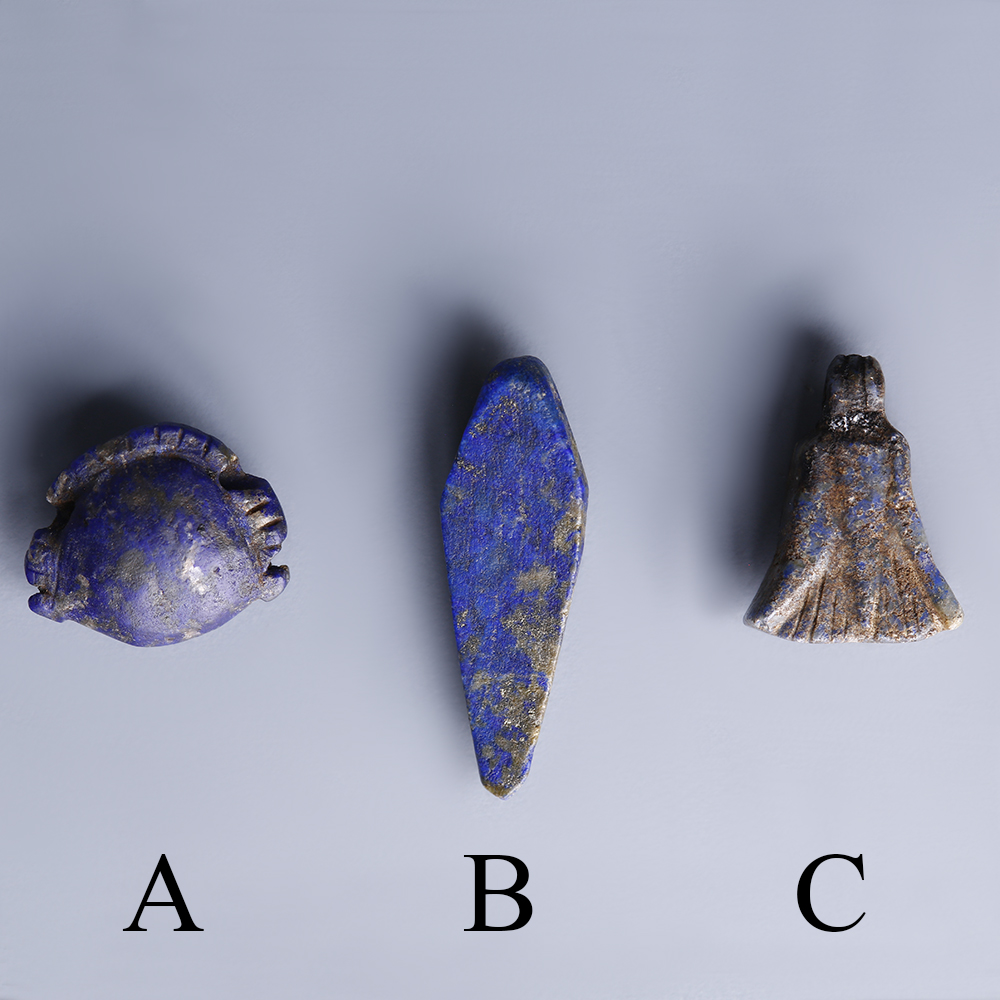Lapis lazuli was considered a semi-precious stone and not found locally to the Egyptians. Its status and value derived in part from the fact that it had to be imported, most likely from Afghanistan.
The cowroid was likely intended as a fertility amulet, based on the cowrie shell’s resemblance to female genitalia. Its longitudinal piercing might suggest that it was worn over the pelvic area as part of a girdle, averting evil forces away from its wearer, who may well have been a pregnant female.
It is thought that the ancient Egyptians had gardens and loved to plant flowers, which perhaps explains the popularity of petal-shaped amulets. Sometimes real flower heads were strung together to be worn by mummies or by the living, and although their precise significance is unknown, flower imagery and amulets were typically symbolic of new life.
The Tyet is also referred to as the ‘Knot of Isis’ or ‘Girdle of Isis’. It is connected to the Ankh sign, and can be translated as ‘life’, ‘welfare’, or similar. Its shape was commonly used for amulets, and was often buried with the dead, in association with Isis’s protective abilities and her connection with the afterlife.
The lotus was an important symbol in the ancient world, as it stood for rebirth and creation. Lotus flowers open during the day, and close at night, thus illustrating the journey of the god, Khepri, who rolled the sun across the earth, and in doing so created day and night.
To find out more about Ancient Egyptian amulets please see our relevant blog post: Egyptian Amulets and their Meanings.

